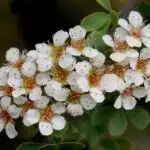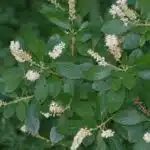Heather shrubs are a delightful addition to any garden. Not only do they provide a burst of color and texture, but they are also low-maintenance and easy to care for. With just a few basic tips, you can help your heather shrubs stay healthy and happy for years to come. Here’s everything you need to know about growing and caring for heather shrubs!
When it comes to growing this beautiful plant, there’s no need for complicated gardening techniques or expensive soil additives. All you need is the right kind of soil, some sunshine and water—and maybe a bit of fertilizer if necessary. Heather shrubs will thrive in almost any type of garden, but it’s important to select the right variety for your climate zone. Once planted, these perennials will bring beauty and vibrancy to your outdoor space with minimal effort on your part!
Caring for your heather shrub is essential if you want it to look its best throughout the year. While it doesn’t require lots of pruning or fertilizing, regular watering and mulching can help keep your heather healthy and lush. You should also be aware of potential problems that may arise, such as pests or disease. By following these simple steps you can ensure that your heather shrub stays happy and healthy—making it an attractive addition to your garden that will last for years to come!
What Is A Heather Shrub?
Plants with personality and purpose, heather shrubs provide a tranquil addition to outdoor spaces. Heralded for their hardiness and hearty hues, they are a versatile variety of evergreen shrubbery. Homeowners can enjoy the beauty of this flowering foliage in gardens from coast to coast.
Heather shrubs are characterized by their small leaves that range in color from deep green to silver-gray. They boast bright clusters of flowers in shades of pink, purple, and white that bloom from late winter through early spring. The flowers may be scented or unscented, depending on the species chosen. These hearty plants are typically easy to grow and require little maintenance other than pruning to control their shape and size.
With an affinity for acidic soils and cool climates, heather shrubs can flourish in areas as diverse as coastal California to the mountains of North Carolina. They do best when planted in full sun or partial shade and need ample drainage to help prevent root rot. Adding mulch around the plant helps regulate moisture levels and protect it from extreme temperatures during both summer and winter months.
What Climate Is Best For Growing Heather Shrubs?
Growing heather shrubs is an easy way to bring vibrant color and texture to your garden. If you are considering planting some of these beautiful shrubs, it’s important to understand the climate in which they thrive best. Heather shrubs prefer cooler climates that have mild winters and lots of rainfall throughout the year. It is important to note that they are not tolerant of extreme cold or heat, so if you live in a climate with hot summers, you may want to consider some other options for your garden.
Though heather shrubs can survive in warmer climates, they will not reach their full potential without cooler temperatures and plenty of moisture. In areas with hot summers and dry conditions, the plants may struggle to stay alive due to lack of water. The ideal temperature range for heather shrubs is between 40-60 degrees Fahrenheit (4-16 degrees Celsius). Additionally, regular watering during the growing season is essential for keeping them healthy.
Knowing what kind of climate works best for growing heather shrubs will help ensure their success in your garden. By understanding their specific needs and setting up a place where they can thrive, you’ll be able to enjoy their bright blooms for many seasons! With the right setup, these hardy plants can add beauty and texture to any landscape. Next up? We’ll cover how to plant heather shrubs into your garden beds—prepare yourself for a colorful display!
How To Plant Heather Shrubs
Planting heather shrubs is a great way to add vibrant colors and textures to your garden. Did you know that there are over 400 different species of heather? With so many varieties, it’s easy to find the perfect heather shrub to fit your landscape.
When it comes to planting heather shrubs, there are two things you need to keep in mind. First, you need to choose the right soil and prepare the area where you will plant. Second, you need to pay attention to how deep and wide you plant each shrub. Here’s what else you should know:
• Soil: Heather needs acidic soil that drains well, so make sure the location has good drainage. You can also add compost or sulfur powder for additional acidity if needed.
• Planting Depth & Width: When planting individual plants, make sure they are at least a foot apart from other plants and about 6 inches deep into the soil. For grouping multiple plants together, space them at least 2-3 feet apart from each other, with a depth of 4-6 inches into the ground.
Remember not all heathers grow in the same way, so take extra care when selecting your plant(s). If you have questions about which type of heather works best for your garden, consult with a local gardening expert or research online. Taking these steps will help ensure that your heather shrubs thrive for years!
How To Space And Group Heather Shrubs
Grouping and spacing heather shrubs correctly is an important part of their care. By paying attention to the area around your shrubs, you can ensure that they get the light, water, and nutrients they need to thrive. Let’s take a look at how you can arrange your heather in order to give them the best chance of success.
The ideal way to group heather shrubs is by planting several together in small clusters or rows. This will create a nice visual effect while also providing plenty of air circulation and light penetration. To ensure that the shrubs are spaced properly, make sure there is around 18-24 inches between each one. Additionally, make sure you avoid overcrowding them as this could lead to fungal diseases or other problems caused by lack of air circulation.
Finally, it’s important to keep in mind that different varieties of heather may require different spacing requirements. So if you’re planting multiple types of heather in one area, take some time to research the specific needs for each variety before you begin planting them. Doing so will help ensure your plants have enough space for healthy growth and development over time. With these tips in mind, you’ll be well on your way to creating a beautiful display of heather shrubs that last for years!
Now that we’ve gone through placement and spacing considerations for your heather shrubs, let’s explore how watering and fertilizing can help keep them healthy and happy.
How To Water And Fertilize Heather Shrubs
It is estimated that over 55% of heather shrubs die due to improper care and maintenance. To ensure your heather shrubs thrive, it’s important to understand how to properly water and fertilize them.
Watering your heather shrubs is essential for good growth. Make sure to water the soil around the plant, taking care not to splash any water onto the foliage or flowers. During dry periods, you should water at least once a week. In addition, mulching with bark chips or compost can help keep moisture in the soil and reduce weeds.
Fertilizing your heather shrub is another important factor in its health and growth. Depending on the specific type of heather, you should use either an all-purpose fertilizer or one formulated specifically for acid-loving plants such as ericaceous fertilizers. When applying fertilizer, make sure not to over-fertilize as this can damage the roots of the plant and cause yellowing of the leaves.
With proper watering and fertilizing techniques, you can help your heather shrub reach its full potential. To further promote its health and beauty, pruning is also necessary for optimal growth and flowering results.
How To Prune Heather Shrubs
Pruning heather shrubs is an important part of their care, and requires a bit more precision than other gardening tasks. While pruning can be intimidating for the beginner gardener, it’s not hard to learn the basics. The goal of pruning is to maintain a healthy shape and size, while also promoting new growth.
To begin, you’ll want to remove any dead wood or branches that have grown too long and thin. This will help promote further growth of the heather bush as a whole. You should also trim off any shoots or branches that are growing outward or at awkward angles. This will help your shrub hold its desired shape.
Lastly, it’s important to keep in mind that heather plants are relatively slow growers and don’t need frequent pruning. If you’re unsure of what to do, it’s best to err on the side of caution and only do minor trimming as needed rather than trying to shape your shrub in one go. With this in mind, you can ensure your heather shrub looks great for years to come! With proper pruning techniques, you’re ready for the next step: mulching your heather shrubs.
How To Mulch Heather Shrubs
While pruning is an important part of caring for heather shrubs, mulching can be equally as beneficial. Mulching helps to protect the root systems of these shrubs from extreme temperatures and other environmental stressors. It also helps to conserve moisture and keep weeds away. But before getting started, it’s important to acknowledge that mulching heather shrubs is not a necessity – in some cases, it may even do more harm than good.
That said, if you decide to mulch your heather shrubs, there are a few things to keep in mind. First, it’s best to use organic material like bark chips, wood chips, or shredded leaves. Don’t use compost or manure as this can lead to nutrient buildup in the soil and potential diseases on your plants. Additionally, it’s important not to pile the mulch too high – aim for a layer no thicker than three inches. This will allow adequate air flow and water penetration into the soil while still providing enough insulation for your heather shrub’s roots.
Finally, when applying the mulch be sure not to let it touch the stems of your plants. Doing so can cause rot or fungus growth on the plant which can damage or even kill it over time. If you follow all of these steps then you should have no problem when mulching your heather shrubs! With proper care and maintenance, they’ll thrive and provide years of beauty and enjoyment in any garden setting.
How To Control Pests And Diseases On Heather Shrubs
It is important to be aware of pests and diseases when caring for heather shrubs. According to a survey by the American Horticultural Society, more than 25% of shrub owners in the U.S. have experienced pest infestation or disease on their plants at least once in the past year. Understanding how to prevent and control pests and diseases on heather shrubs is essential for keeping them healthy and beautiful.
Good garden hygiene is key for pest prevention on heather shrubs. Regularly removing debris from around the plants helps reduce the chances of an infestation, as does periodically checking for signs of damage or infection. Pruning any damaged parts of the plant can also help prevent further spread of pests or disease-causing organisms.
It is also important to use appropriate insecticides if you notice signs of a pest infestation on your heather shrub. Many insecticides are available that can safely be used on heather shrubs, so it is important to read labels carefully before applying any product to make sure it will not harm your plant or other beneficial species in your garden. Taking these measures can help keep your heather shrub healthy and looking its best year-round. Moving ahead, let’s look at how we can propagate our lovely heather shrubs…
How To Propagate Heather Shrubs
Surprisingly, heather shrubs can be propagated in a number of ways! It’s not as hard as you might think. In fact, it could be just the thing to make your garden even more stunning. Let’s take a look at how to propagate heather shrubs.
First, if you’re looking for an easy way to propagate heather shrubs, consider taking cuttings from existing plants. Cuttings should be taken from healthy stems that are about four inches long and free of flowers. Place the cuttings in moist soil and keep them watered until they’re fully rooted. You’ll know when they’re ready when you see new growth around the base of the cuttings.
Alternatively, you can propagate heather shrubs by dividing established plants into multiple sections and transplanting them into other locations in your garden or yard. This is best done during early spring or late fall when the weather is cooler and there is less stress on the plant. When selecting which parts of an existing plant to divide, look for any dense clusters with multiple stems that are large enough to be divided without damaging them or leaving too few roots behind.
Propagating heather shrubs can be a great way to add more color to your garden without breaking the bank! With just a few simple steps, you can create beautiful flowering plants that will last for years to come with minimal effort required on your part.
Types Of Heather Shrubs
If you are looking to add some texture and beauty to your garden, then heather shrubs may be the perfect fit. There are various types of heather shrubs available for different landscapes. Here is a breakdown of the most popular types:
Calluna vulgaris – This low-growing heather shrub has an arching evergreen form and is known for its beautiful clusters of flowers in the summertime.
Erica carnea – This ground cover has small evergreen foliage and produces white or pink flowers in winter or spring.
Daboecia cantabrica – This tall-growing heather shrub features deep green foliage and bell-shaped flowers from late spring to early summer.
No matter which type of heather shrubs you choose, they can provide a vibrant touch to any landscape design. Heather shrubs require minimal maintenance and care, making them an ideal choice for gardeners of all levels. With their unique colors and textures, these plants create a stunning backdrop that will bring life to any outdoor space.
When selecting companion plants for your heather shrubs, it’s important to consider the plant’s growth habit, water requirements, and soil conditions.
Companion Plants For Heather Shrubs
When it comes to companion plants, there are a few things to keep in mind when selecting the perfect shrub-mates for your heather shrubs. Below is a list of four tips that will help you choose the best plants for your garden:
- Select plants with similar requirements. Be sure to choose companion plants that need the same kind of growing environment as heathers. This includes soil type, water needs, and light exposure.
- Consider flower color and seasonality. If you’re looking for complementary colors or blooms that bloom at different times of the year, then be sure to select companion plants with different characteristics than your heather shrubs.
- Choose low-maintenance shrubs and flowers. You don’t want to spend too much time on maintenance, so choosing low-maintenance companion plants is key!
- Pick native species whenever possible. Native species will have an easier time adapting to local conditions than non-native species, making them ideal companions for your heather shrubs!
With these four tips in mind, some great companion plants for heather shrubs include lavender (Lavandula angustifolia), rosemary (Rosmarinus officinalis), and bluebells (Campanula carpatica). These all require similar growing conditions and provide beautiful blooms throughout the season! In addition, they’re all low-maintenance plants, making them great choices when it comes to selecting companions for your heathers. Now that we’ve discussed companion planting with heathers, let’s take a look at some common varieties of heather shrubs available today!
Common Heather Shrub Varieties
When it comes to sprucing up your yard with vibrant color, heather shrubs are one of the best options. With a wide variety of varieties available, these low maintenance bushes can bring life to any garden. Let’s take a look at some of the most common heather shrub varieties.
From dwarf varieties to those that reach heights of up to five feet, there is something for everyone in the heather family. From the bright pink blooms of Calluna vulgaris ‘Firefly’ to the deep purple hues of Erica carnea ‘Velvet Night’, you’ll be sure to find a bush that fits your style and needs. For those looking for something longer lasting than annuals, many of these shrubs bloom from late summer through fall.
If you’re looking for a low-maintenance shrub, look no further than Erica x darleyensis ‘Mediterranean Pink’. With its soft pink flowers and yellow foliage, this evergreen shrub is perfect for a sunny spot in your garden. TIP: When planting heather shrubs, be sure to give them plenty of space as they need room to grow without being crowded by other plants!
Popular Uses For Heather Shrubs
Who would have thought that such a small, delicate plant could be so versatile and useful? Heather shrubs are not only beloved for their beauty, but they can also serve a variety of practical purposes around the home or garden. From adding texture and color to landscaping designs to providing food for wildlife, heather shrubs can do it all!
Popular uses for heather shrubs include using them as ground cover in gardens, edging along pathways and driveways, and as low-maintenance hedges. With their bright flowers that bloom in shades of pink and purple, they create an eye-catching contrast with any surrounding foliage. They’re also tolerant of drought and poor soil conditions, making them ideal for those who don’t want to spend too much time tending their plants.
Heather shrubs are also popular among birdwatchers—their nectar-filled flowers attract many species of birds, while their berries provide food sources throughout the year. And if you’re looking for a subtle fragrance in your garden or patio area, heather shrubs provide just that! Their unique scent is sure to create a cozy atmosphere wherever it is enjoyed.
With so many uses for heather shrubs, it’s no wonder why people find them irresistible! But before you start planting your own heather shrub collection, there are some design tips you should know about. Read on to learn more about how to create the perfect landscape with these gorgeous plants.
Design Tips For Growing Heather Shrubs
Designing a landscape with heather shrubs offers a unique opportunity to create a beautiful, eye-catching space. Whether you’re looking to fill in an area with low ground cover or give your outdoor space a more natural touch, these evergreen shrubs provide the perfect solution.
When planting heather shrubs, it’s important to consider their growth habits and light exposure preferences. Generally speaking, they prefer full or partial sun exposure and must have well-draining soil to thrive. To get the best results, plan ahead and allow for plenty of room between each shrub for air circulation and adequate sunlight penetration. Additionally, pruning is essential for preventing the dense growth from becoming overgrown.
Heather care is generally straightforward, though regular maintenance is needed to ensure your shrubs look their best. Watering deeply at least once per week is key; however, too much water can cause root rot and other issues. Applying mulch around the base of each plant will help retain moisture during hot spells and control weeds as well. Finally, fertilizing your plants annually with an organic fertilizer will keep them healthy and vibrant throughout the year.
By following these tips and allowing enough space between each plant when planting, you can enjoy beautiful heather shrubs that bring life to your garden all year round!
Tips For Growing Heather Shrubs Successfully
Growing heather shrubs can be a rewarding experience, but before you do, it’s important to understand the basics of their care and maintenance. Like any other shrub, heather requires the right environment and proper attention in order to flourish. To illustrate this concept, consider the story of a gardener who prepared for months for the perfect heather garden. After studying about soil composition and watering requirements, this gardener was able to create a thriving heather oasis that provided beauty and solace all year round.
For those looking to achieve similar success with their own heather shrubs, here are five tips for growing them successfully:
• Create an ideal environment: Heather needs well-drained soil that is slightly acidic with plenty of organic matter. Be sure to do yearly tests of your soil’s pH level and adjust accordingly.
• Provide adequate water: Heather needs regular watering during dry periods or when there are long periods without rainfall. Water deeply 1-2 times per week so the roots can absorb enough moisture.
• Prune judiciously: Regular pruning is necessary to keep your heather shrubs healthy and looking good. If you notice any dead or diseased branches, remove them promptly.
• Fertilize regularly: Feed your heather plants every few weeks during the growing season with a balanced fertilizer such as 10-10-10 or 15-15-15. This will help promote healthy growth and blooming throughout the year.
• Watch out for pests and diseases: Inspect your plants often for signs of pests or disease such as aphids or powdery mildew. If you find any problems, treat them quickly with an appropriate pesticide or fungicide to ensure your plants remain healthy and beautiful all year round.
With these tips in mind, anyone can create an amazing heather garden that lasts for years to come! Whether you’re a seasoned veteran or just starting out on your gardening journey, following these simple steps will help ensure you get great results from your shrubs no matter what type of climate you live in . With some patience and dedication, you can have beautiful blooms every season!
Frequently Asked Questions
What Are The Best Varieties Of Heather Shrubs For My Climate?
Did you know that the heather shrub is considered one of the most versatile evergreen plants? It can adapt to many different climates and soils, making it a popular choice for gardeners around the world. If you’re looking to add some of these beautiful shrubs to your garden, here’s what you need to know about selecting the best varieties for your climate.
When choosing a heather shrub, start by considering your local weather conditions. If you live in a mild climate with cold winters and warm summers then a variety like Erica carnea or Daboecia cantabrica should do well. But if you have hot summers and cold winters then either Calluna vulgaris or Vaccinium corymbosum would be better suited for your region.
Once you’ve chosen the right variety for your climate, it’s time to think about other factors such as soil type, sunlight exposure and water needs. For example, if your soil is acidic then any of the above varieties might need some additional amendments such as peat moss or sulfur powder. Similarly, if your area gets plenty of sunshine then it may be necessary to provide extra protection from extreme heat during summer months. Lastly, water needs will vary depending on the type of heather shrub you choose as well as where it is planted in your garden – some require more moisture than others so make sure to research this thoroughly before planting.
Regardless of which variety you choose, there are a few key tips to keep in mind when caring for heather shrubs: 1) Give them plenty of oxygenated air by pruning regularly; 2) Fertilize them twice a year; 3) Provide adequate drainage by adding mulch around their base; 4) Monitor pests and diseases closely; 5) Water them deeply but infrequently. With proper care and maintenance, these lovely plants will reward you with years of vibrant beauty in your garden!
Are Heather Shrubs Deer Resistant?
It may come as a surprise that something as seemingly vulnerable and delicate as a heather shrub could actually be deer resistant! But beneath the beauty of these small evergreen bushes lies an unexpected strength.
The good news is that yes, heather shrubs are indeed deer-resistant – with some caveats. Generally speaking, it’s best to plant them in areas where the deer population is low or where there are enough other plants for the deer to eat instead. Placing a protective fence around your heathers can also help keep them safe from hungry deer.
These fragile looking flowers have more resilience than you may think and can make a beautiful addition to your garden – whether you live in an area with plenty of deer or not. If you’ve been wanting to add some color and texture to your outdoor space, then consider planting some heather shrubs today! With just a bit of care and attention, they will reward you with their beauty and charm for years to come.
How Often Should I Prune My Heather Shrubs?
Do you have heather shrubs in your garden? Have you been wondering how often to prune them? Pruning is an important part of caring for heather shrubs, and can help keep them healthy and looking their best. So, let’s take a look at what you need to know about pruning heather shrubs.
Coincidentally, the best time to prune heather shrubs is in late winter or early spring. Pruning at this time will help to reduce the risk of disease and encourage new growth from the base of the plant. When pruning, be sure to trim back any dead or damaged branches, as well as those that are too long or overgrown. It’s also a good idea to remove any flowers that have already gone by. This will allow more energy to go into producing new flowers in the following season.
When it comes to keeping your heather shrubs looking their best, regular pruning is essential. Not only will it help keep your plants healthy and promote new growth, but it will also ensure they stay attractive throughout the growing season. Plus, with routine maintenance, you can rest assured that your heather shrub will continue providing beauty and enjoyment for years to come. So don’t hesitate – take some time each year to give your heather shrub a proper trim!
What Is The Best Soil Type For Growing Heather Shrubs?
Heather shrubs are a great addition to any garden, but providing the right soil is key. Surprisingly, studies show that the ideal soil for growing heather shrubs is actually acidic. In fact, it should have a pH level of 4.5-6.0 in order to ensure their long-term health and growth.
So how can you provide this level of acidity? One way is by adding peat moss or pine needles around the base of the plant every spring. This will help to keep the soil acidic and give your plant an extra boost throughout the year. Additionally, you should make sure that your heather shrub has adequate drainage; otherwise, its roots could be damaged from sitting in water for too long.
When it comes to planting and caring for heather shrubs, providing the right soil type is essential for their success. With the proper soil and regular care such as pruning and fertilizing, these plants will thrive in your garden for years to come!
What Type Of Fertilizer Is Best For Heather Shrubs?
It’s time to give your heather shrub the nourishment it needs to thrive! Fertilizer is a vital part of any healthy plant’s life, and heathers are no exception. But with so many options on the market, it can be hard to know which fertilizer is best for your heather. Let’s take a look at what type of fertilizer will help you get the most out of this gorgeous shrub.
To reap a bumper crop of beautiful heather blooms, you need to make sure you’re giving them just the right kind of fertilizer. A slow-release fertilizer that contains nitrogen, phosphorous, and potassium is ideal for these bushes. This will keep them blooming all season long without overfeeding or burning the roots. Additionally, adding a layer of organic compost is always a good idea since it boosts the soil quality and provides essential nutrients.
When applying fertilizer to your heather shrubs, be sure to start small and increase gradually as needed. Too much fertilizer can cause root burn, so it’s better to err on the side of caution rather than go overboard right away. As they say, ‘slow and steady wins the race’ – which couldn’t be more true when it comes to caring for your heathers! With patience and regular maintenance using an appropriate fertilizer, you’ll be rewarded with vibrant blooms year after year.
Conclusion
In conclusion, Heather shrubs are a wonderful addition to any garden. With the right varieties for your climate and proper pruning, you can have a beautiful heather shrub for years to come. When choosing the best soil type and fertilizer for your heather shrub, make sure to find ones that are specifically designed for this type of plant. This will help keep your heather shrub healthy and thriving. Additionally, with some extra care and attention, you can also make sure that it is deer resistant.
With all these tips in mind, you are now ready to start caring for your own beautiful heather shrub! By following the guidelines outlined in this article, you can ensure that your heather shrub will be healthy and vibrant for many years to come. From selecting the right variety for your climate to providing it with adequate nutrients, growing and caring for a heather shrub is easy when done correctly.
Overall, taking care of a heather shrub can be an enjoyable experience if you know how to do it right! Following these simple tips will help ensure that you have a healthy heather shrub in your garden or landscape that will continue to thrive throughout the seasons.





























